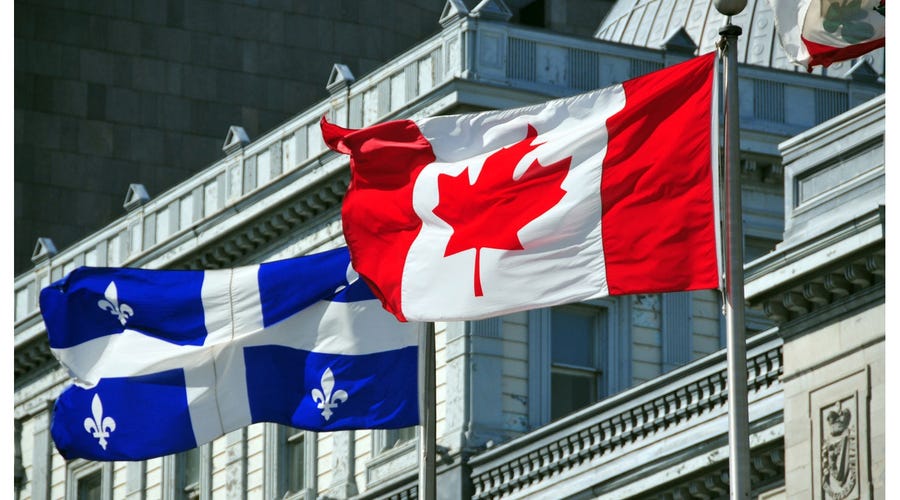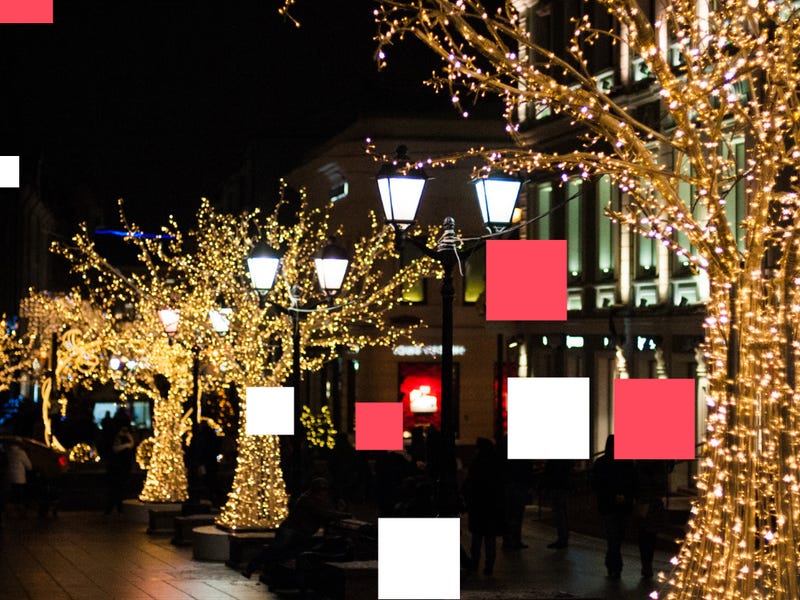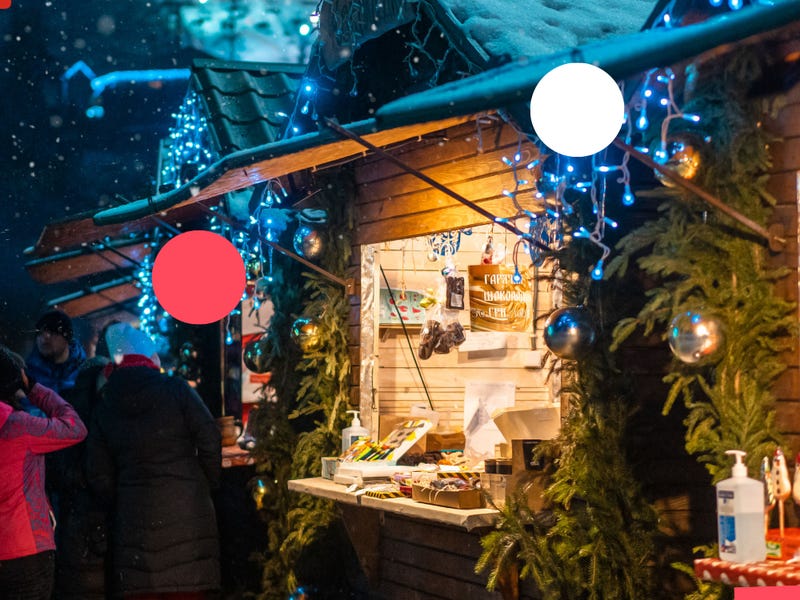
Essential Facts & Cultural Insights: What to Know About Canada and French Canadians (Beyond Maple Syrup)
Author:
Berlitz
Canada stands as one of the world's most culturally diverse nations, home to a rich tapestry of languages, traditions, and regional identities.
Yet for many visitors and newcomers, understanding the nuances of Canadian culture—particularly the distinct identity of French-speaking Canadians—can feel overwhelming. Beyond the stereotypes of hockey, politeness, and maple syrup lies a complex cultural landscape shaped by centuries of history, linguistic pride, and regional distinctiveness.
This guide explores essential facts about Canada and French Canadians, offering insights that go beyond surface-level clichés. Whether you're planning to visit Quebec, considering a move to Canada, or simply curious about this bilingual nation, understanding these cultural nuances will enrich your experience.
And if you're inspired to dive deeper into the language and culture, learning Canadian French offers an authentic gateway to truly connecting with Francophone communities across the country.
It's More Than Just "French": Understanding Identities
One of the quickest ways to offend a French-speaking Canadian? Call them "French." This common mistake reveals a fundamental misunderstanding of Canadian identity and history.
French-speaking Canadians are not simply transplanted Europeans—they represent distinct cultural groups with centuries of North American history.
- The term "French" typically refers to people from France, whereas French-speaking Canadians have developed their own unique identity, separate from their European ancestors.
- Québécois refers specifically to people from Quebec, regardless of their language. However, it's often used more narrowly to describe French-speaking Quebecers who identify strongly with Quebec's distinct culture and history.
- French Canadian or Canadien français historically described people of French ancestry across Canada, though this term has evolved and is less commonly used today.
- Francophone simply means French-speaking and can apply to anyone who speaks French as their first language, whether in Quebec, Ontario, New Brunswick, or elsewhere in Canada.

Think of it this way: would you call U.S. residents "English" simply because they speak English? The comparison illustrates why proper terminology matters. These distinctions reflect not just linguistic preferences but deeply-held cultural identities forged over centuries of unique North American experience.
From "Kanta" to "Kebec": Quick History and Geographical Facts
The very names of Canada and Quebec tell stories of Indigenous heritage and European colonization intertwined.
Quebec derives from the Algonquian word Kebec, meaning "where the river narrows"—a reference to the narrowing of the Saint Lawrence River near present-day Quebec City. This powerful waterway has served as the lifeblood of the region for millennia, facilitating trade, transportation, and cultural exchange long before European arrival.
Similarly, Canada comes from the Huron-Iroquois word Kanata, meaning "village" or "settlement." When French explorer Jacques Cartier arrived in 1535, Indigenous people used this word to describe their communities, and Cartier adopted it to refer to the entire region.
What began as a simple term for a village eventually became the name of the world's second-largest country by land area.
Quebec City itself holds a unique distinction in North America: it remains the only walled city north of Mexico.

After capturing the city from the French in 1759, the British fortified existing walls in the mid-1700s, creating the impressive stone fortifications that still encircle Old Quebec today. This architectural treasure earned Quebec City designation as a UNESCO World Heritage Site in 1985 and recognition as a National Historic Site of Canada. The preserved ramparts, gates, and bastions offer visitors a rare glimpse of European-style fortifications in the New World, making Old Quebec one of the continent's most historically significant urban landscapes.
The Saint Lawrence River continues to define Quebec's geography and culture. This mighty waterway connects the Great Lakes to the Atlantic Ocean, serving as a crucial transportation corridor and shaping settlement patterns that persist today. Most of Quebec's population lives along the St. Lawrence and its tributaries, creating a ribbon of Francophone culture that stretches from Montreal through Quebec City and beyond.
The Distinct Dialect: Canadian French and Quebec Culture
For anyone considering French language classes, understanding that Canadian French differs significantly from European French is essential—and fascinating.
Canadian French, particularly the Quebec variety, has evolved independently from Parisian French for over 400 years. While mutually intelligible, the two varieties feature notable differences in pronunciation, vocabulary, and expressions. Quebec French retains certain archaic features from 17th and 18th-century French that have disappeared in France, while also incorporating English loanwords and developing its own unique expressions.
The Quebec dialect known as joual (derived from the word cheval, meaning horse) emerged in working-class Montreal and incorporates heavy anglicisms and distinct pronunciation. While sometimes controversial, joual represents an authentic expression of Quebec's linguistic evolution and appears frequently in Quebec literature, theatre, and popular culture.
Common Quebec French expressions often perplex European French speakers:
- Where a Parisian might say faire du shopping, a Quebecer says magasiner.
- Instead of week-end, Quebecers often use fin de semaine.
- The charming expression C'est de valeur (literally "it's of value") actually means "that's too bad" or "what a shame"—a meaning shift that illustrates how the language has evolved independently.
Pronunciation differences prove equally striking. Quebec French features distinct vowel sounds, particularly the pronunciation of tu and du, which sound quite different from their European counterparts. The letter "r" receives a rolled treatment in some Quebec regions, contrasting with the throaty Parisian "r."
Beyond Quebec, significant Francophone communities thrive across Canada. New Brunswick stands as Canada's only officially bilingual province, with about one-third of its population speaking French as their first language. Ontario hosts over half a million Francophones, while communities in Manitoba, Saskatchewan, and even British Columbia maintain vibrant French-language institutions and cultural traditions.
According to Statistics Canada, approximately 7.7 million Canadians speak French as their first language, representing about 21% of the population. However, the percentage of Canadians who can conduct a conversation in both English and French—approximately 18%—demonstrates that bilingualism remains more aspiration than reality outside Quebec and New Brunswick.
For those interested in French for travel to Quebec or deeper cultural engagement, understanding these linguistic distinctions proves invaluable. The French classes in Montreal and other Quebec-based programs offer provide authentic exposure to Canadian French, preparing learners for real-world conversations rather than just textbook French.
Beyond the Stereotypes: Maple Syrup, Beer, and Facts
Some Canadian stereotypes exist for good reason—they're rooted in impressive facts.
The Maple Syrup Monopoly
Canada dominates the global maple syrup market. According to Statistics Canada, the country is responsible for about two-thirds of the world's maple syrup production, with Quebec producing the vast majority of the Canadian supply.

Perhaps most remarkably, the maple syrup industry maintains a strategic stockpile—officially called the International Strategic Reserve—to stabilize prices and ensure consistent supply during years when weather conditions reduce production. This reserve, managed by the Quebec Maple Syrup Producers federation, can hold up to 100 million pounds of maple syrup, making it one of the world's most delicious strategic reserves, alongside oil and grain stockpiles maintained by various nations.
Beer Heritage
Canadians' appreciation for beer has deep roots. The Molson Brewery, founded in 1786 by English immigrant John Molson, holds the distinction of being the oldest brewery in North America. Located on the banks of the Saint Lawrence River in Montreal, the brewery has operated continuously for over 235 years, surviving wars, prohibition debates, and dramatic changes in Canadian society.
John Molson's entrepreneurial vision extended beyond beer—he also established one of Canada's first steamship lines and helped found Montreal's first bank. The Molson family became synonymous with Canadian business success, and their brewery evolved into a national institution. Today, Molson Coors Beverage Company continues operations at the historic Montreal site, maintaining a tangible link to Canada's brewing heritage while serving markets across North America.
These facts—impressive as they are—represent just the surface of Canadian and Quebec culture. The true richness lies in understanding how history, geography, language, and identity interweave to create distinct Canadian experiences.

Ready to Explore the Culture? Learn Canadian French
From the Indigenous origins of the names Canada and Quebec to the distinctive evolution of Canadian French, from maple syrup strategic reserves to centuries-old breweries, Canada offers endless cultural fascination.
Understanding French Canadian identity requires looking beyond simplistic stereotypes to appreciate the complex history and proud linguistic traditions that shape Francophone communities across the country.
The cultural nuances explored in this article merely scratch the surface. Language serves as the deepest gateway to cultural understanding—and learning Canadian French offers unparalleled access to Quebec's vibrant culture, rich history, and warm communities.
Whether you're planning to visit Quebec, considering relocation to Canada, pursuing business opportunities in Francophone markets, or simply curious about this unique corner of North American culture, language learning transforms observation into participation.
Speaking French—particularly Canadian French—demonstrates respect, opens doors, and creates authentic connections impossible to achieve as a linguistic outsider.
At Berlitz Canada, our French language classes focus on practical, conversational skills that prepare you for real-world interactions in Canadian French contexts. Our programs emphasize the vocabulary, expressions, and cultural insights specific to Canadian French, ensuring you'll feel confident whether ordering poutine in Montreal, discussing business in Quebec City, or exploring Francophone communities across the country.
Ready to move beyond tourist status and truly connect with French Canadian culture? Start your journey with Berlitz Canada today. Discover how our expert instructors and proven methodology can help you master Canadian French while gaining the cultural competence that transforms every interaction. Explore our programs and take the first step toward authentic cultural engagement.


